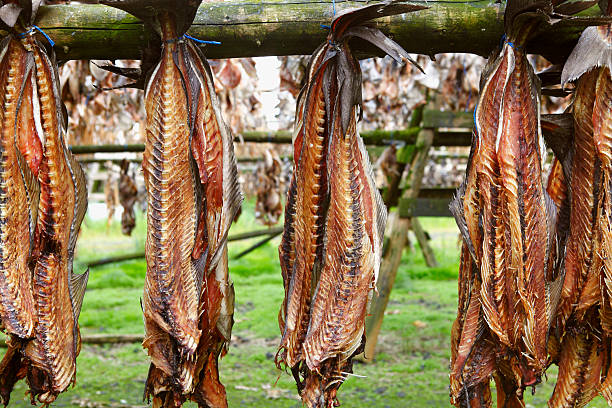Discovering the Unique Flavors of Icelandic Cuisine
Icelandic cuisine is more than just fermented shark and hot dogs. This small island nation has a rich culinary tradition that has evolved over centuries, based on local ingredients, unique preparation methods, and a deep sense of history. From hearty stew to fresh seafood, the flavors of Iceland are as diverse as its landscapes. Let's explore the world of Icelandic cuisine and discover what makes it so special.

The Historical Influence on Icelandic Cuisine
Iceland’s culinary journey is a fascinating story of resilience and innovation. The harsh climate and isolated geography have shaped its food culture. Traditional Icelandic dishes often feature preserved foods like dried fish and smoked lamb, prepared in ways that could survive the long, dark winters. Despite the challenging conditions, Icelanders have managed to create a cuisine that is truly their own.
The Bounty of the Sea
Surrounded by the North Atlantic Ocean, Iceland is known for its fresh seafood. From the traditional plokkfiskur, a comforting fish stew, to the more modern sushi-like dishes using local ingredients like Arctic char or langoustine, the sea plays a significant role in Icelandic cuisine.
The Unique Flavors of Iceland
Iceland is also home to some unique flavors. Skyr, a thick, creamy dairy product similar to Greek yogurt, is a staple in most Icelandic homes and often enjoyed with fresh berries. The country also produces some of the world’s best lamb, grazed on wild herbs and berries, resulting in a distinctive flavor profile.
Icelandic Beverages: Beyond Brennivín
While Brennivín, a potent schnapps often referred to as “Black Death,” is one of Iceland’s most famous beverages, the country also has a thriving craft beer scene. Icelandic breweries are gaining international recognition for their unique brews, many of which incorporate local ingredients like Arctic thyme and birch.
Innovation in Icelandic Cuisine
Despite its traditional roots, Icelandic cuisine is not staid. Contemporary Icelandic chefs are reimagining classic dishes, using modern techniques and presentation styles to create a new wave of Icelandic cuisine. This innovation is helping to put Icelandic gastronomy on the global culinary map.
- Icelandic Butter: Icelandic butter is known for its rich flavor and high fat content. It is a key ingredient in many recipes.
- Herbs and Spices: Wild herbs and spices like Arctic thyme, angelica, and birch are commonly used in Icelandic cooking, adding a unique flavor.
- Bread Baked in the Ground: Rye bread, or rugbrauð, is traditionally baked in a pot buried in the ground near a hot spring.
- Hot Spring Lobster: One of the most unique dishes is lobster cooked in a hot spring, a true testament to Iceland’s innovative culinary techniques.
In conclusion, Icelandic cuisine is a fascinating blend of history, innovation, and local ingredients. Its unique flavors and dishes reflect the country’s resilience and creativity. Whether it’s the hearty traditional dishes or the innovative creations of modern chefs, Icelandic cuisine offers a culinary journey that is as unique and breathtaking as the country itself. So, next time you are seeking a new gastronomic adventure, why not explore the delightful flavors of Icelandic cuisine? It’s a journey you won’t regret.




